
Developmental Mouse Brain Atlases are now available in NeuroInfo
MBF Bioscience is excited to announce that NeuroInfo now supports two developmental mouse brain atlases from the Kim Lab. These atlases

NeuroInfo enables whole brain investigation of circuits, neuronal populations, and biochemical marker expression using widely accepted brain atlases for anatomic reference. Visual and quantitative measurements from 2D and 3D brain images are characterized and visualized within brain region delineations from a standardized reference space. NeuroInfo supports a variety of brain imaging techniques including; whole and semi brain volumes from cleared tissue specimens, serial section series, MRI and micro-CT imagery, and even single serial section whole slide images. Advanced AI segmentation and registration methods provide accurate results that are standardized and repeatable. NeuroInfo streamlines sophisticated computational pipelines into a single, powerful application that can be used in laboratories of every size.
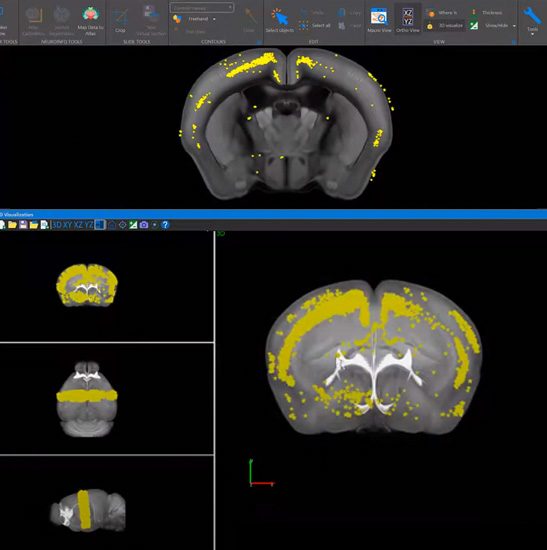
NeuroInfo performs brain-wide characterization of cell populations and biochemical marker expression, and generates quantitative analysis reports on these objects within individual brain regions. Brain volumes are registered to either the Allen Mouse Brain Atlas or the Waxholm Rat Atlas so that experimental measurements can be accumulated or compared in a standardized coordinate system across animals, cohorts, and laboratories. Advanced deep learning methods mean that you can get highly accurate data automatically, and no longer need to manually click cells or draw anatomic boundaries. NeuroInfo’s use of standardized brain atlases established by the scientific community means you can leverage the work of the expert neuroanatomists that created the atlases by aligning your experimental brains with their coordinate systems.
NeuroInfo was developed in collaboration with the Allen Institute for Brain Science.
Recommended Hardware Requirements
NeuroInfo is powerful software that works with image data of any size and complexity. Because of its flexibility, our computing resource recommendations vary to balance affordability and performance required for large, multi-channel data.
Please contact us to help you specify a computing configuration that best suits your imaging and research needs.
| 64-bit Windows 11 operating system |
| CPU with at least 18-24 cores (36-48 threads). More cores improve performance when using large data sets. |
| Solid state hard drive(s). Preferably non-volatile memory express (NVMe) drives. |
| 128 GB of system memory. More memory is better for large data sets and 3D brain registration. |
| Graphics card with 8 GB memory or more. Graphics cards from NVIDIA and AMD have been tested with MBF Bioscience software. |
| Minimum Hardware Requirements (not recommended) |
|---|
| 64-bit Windows 10 operating system |
| 12 core processor (24 threads) |
| 32 GB memory |
| Graphics card with 2 GB memory or more |
| Computer-Hardware Upgrade Priorities |
|---|
| To upgrade your system for better performance with MBF Bioscience software, we suggest that you prioritize computer hardware upgrades as follows: |
|
|
|
Deep Learning for Cell Detection in Neuroscience Research
>> Learn More
A GPS for the brain and so much more
>> Learn More
Huron Digital Pathology and MBF Bioscience Partner to Enable Large-scale, Repeatable Whole Slide Imaging Workflows for Life Science Research
>> Learn More
Neurolucida, NeuroInfo Aids NIH GENSAT Project
>> Learn More
Download NeuroInfo product sheet here.
NeuroInfo® Version 2024.1.1
Released August 2024
View Full Version History Here.
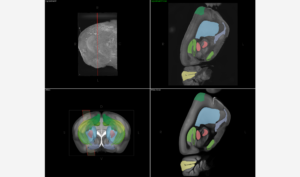
Demonstrates registering a hemisphere into the Allen Brain Atlas. The 3D registration of the right hemisphere of a cleared mouse brain imaged with light sheet microscopy. The experimental image (seen in the top panels) has been registered to the Allen Mouse Brain Atlas (bottom panel) using NeuroInfo's non-linear transformation algorithms. Anatomical regions from the Allen Mouse Atlas can be selected and overlayed onto the user's experimental dataset for mapping, visualization and validation.
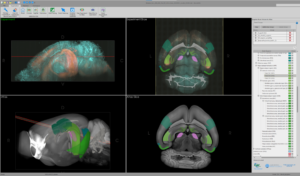
NeuroInfo 3D registration of a light sheet image of cleared mouse brain tissue. The top row displays the experimental image as a sagittal projection (left), and a transverse optical section with brain regions highlighted (right). The lower row displays equivalent images from the Allen average mouse brain CCF. Brain regions are chosen in the ontology panel (right panel).
Researchers studying structure and function in mouse brains can use NeuroInfo to analyze and register their brain volumes to the Allen Mouse Brain Atlas—an open access volumetric mouse brain atlas.
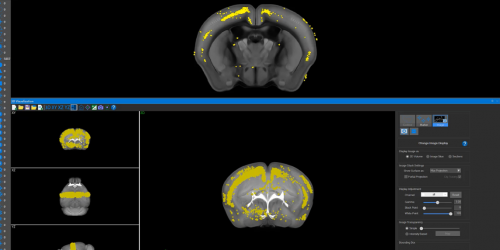
Researchers studying structure and function in rat brains can now use NeuroInfo to analyze and register their brain volumes to the Waxholm Rat Brain Atlas—an open access volumetric atlas of the Sprague Dawley rat brain.
Once mouse or rat brain sections are registered to a standardized atlas, it immediately becomes possible to automatically delineate brain regions in the experimental sections under study. With NeuroInfo you can choose to use a subset of brain regions you customize for your specific research, or all of the hundreds of distinct anatomically delineated regions in a given brain atlas.
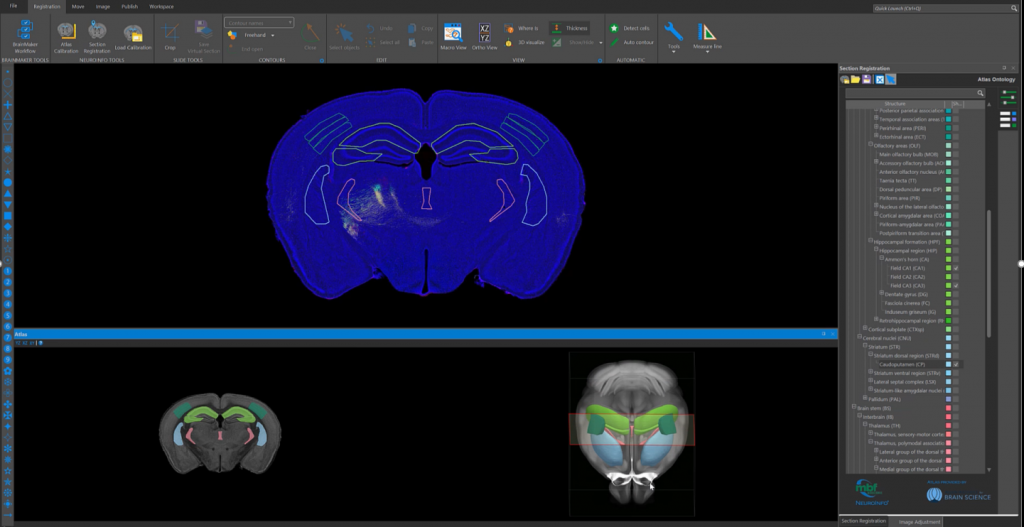
Identify labeled cells in brain volumes using an intuitive AI cell detection workflow. Our deep learning algorithms are robust against histologic and imaging artifacts such as edge effects, uneven illumination, and variable staining across specimens. Detected cells can be mapped to the Allen Mouse Brain Atlas and tallied in each of its 2500 brain structures, making comparative quantitative analysis between mice from different experiments and laboratories easy and standardized.
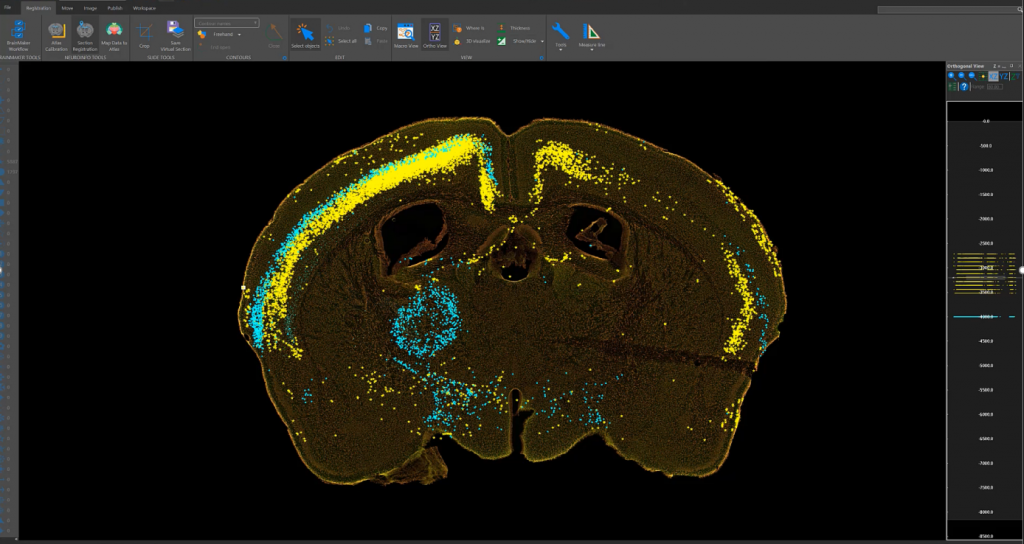
Once mouse or rat brain sections are registered to a standardized atlas, it immediately becomes possible to automatically accumulate and compare measurements made on those sections (e.g., cell counts per brain region) across animals, cohorts, and laboratories.
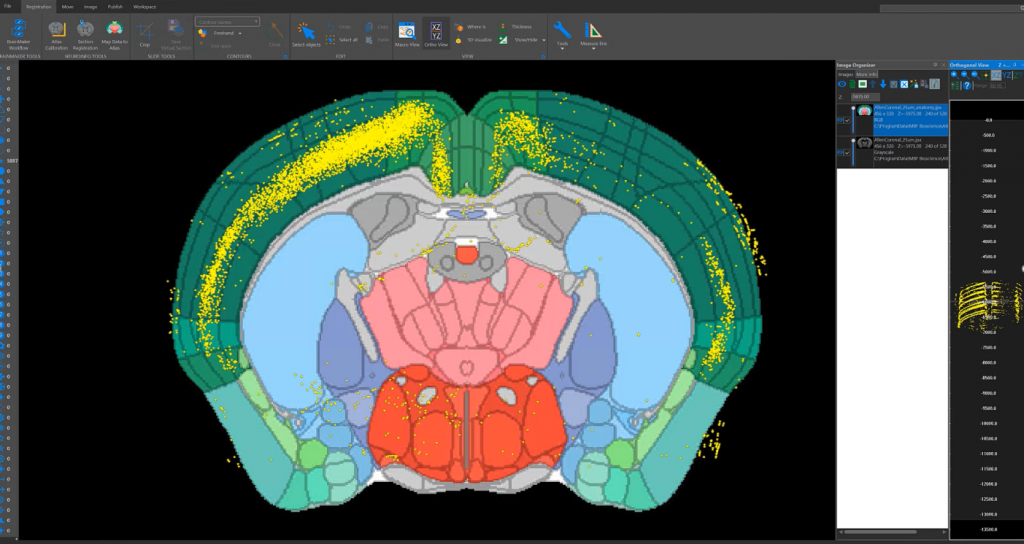
MBF Bioscience is always working to ensure that scientific image data in a wide variety of file formats are supported. Our development team works closely with microscope and scanner vendors to make sure that our support for the latest big-data file formats is supported in NeuroInfo.
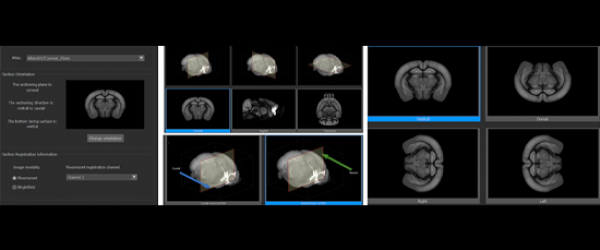
NeuroInfo is used across the globe by the most prestigious laboratories.






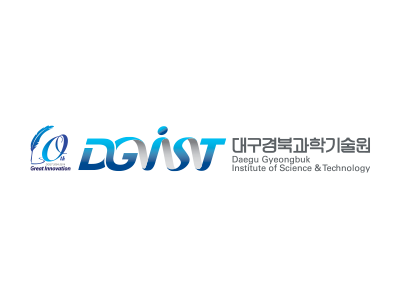





MBF Bioscience is excited to announce that NeuroInfo now supports two developmental mouse brain atlases from the Kim Lab. These atlases

The democratization of neuroscience is a movement that aims to make neuroscience research more accessible and inclusive to everyone. This movement

We are pleased to announce that the International Neuroinformatics Coordinating Facility (INCF) has endorsed the MBF Bioscience neuromorphological file format as
NeuroInfo’s utility is underscored by the number of references it receives in the worlds most important scientific publications. See examples below:
Boitet, M., H. Eun, et al.
“Non-invasive In Vivo Brain Astrogenesis and Astrogliosis Quantification Using a Far-red E2-Crimson Transgenic Reporter Mouse.” Molecular Neurobiology.View Publication
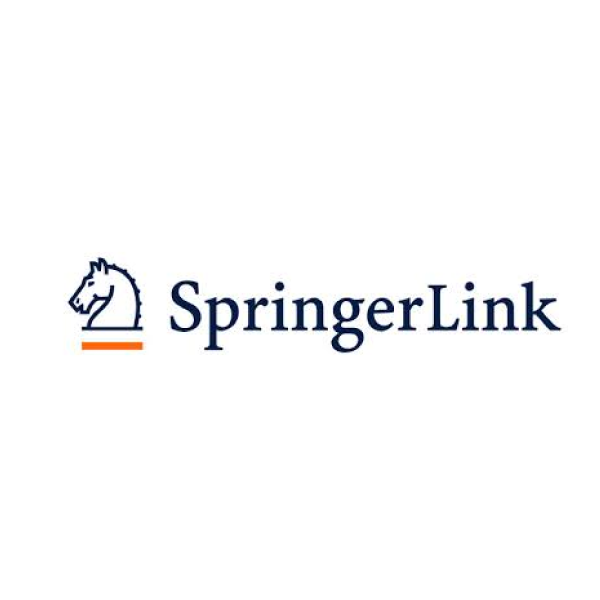
Niraula, S., J. J. Doderer, et al.
“Excitation-inhibition imbalance disrupts visual familiarity in amyloid and non-pathology conditions.” Cell ReportsView Publication
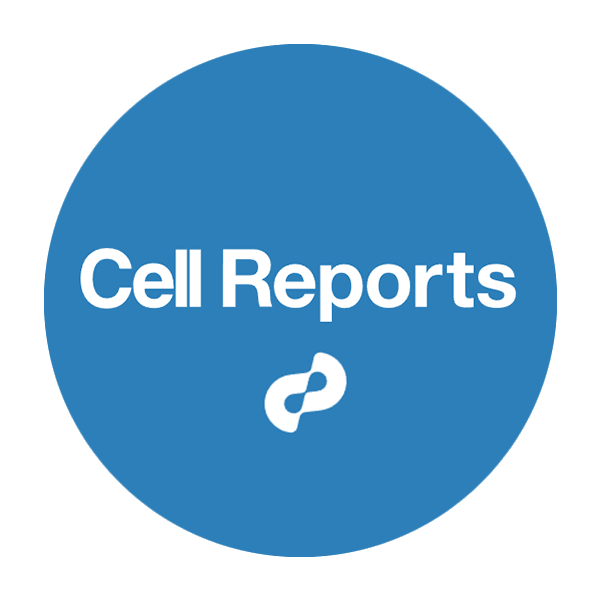
Emily, P., D. Sarah, et al.
Circuit-Specific Plasticity of Callosal Inputs Underlies Cortical TakeoverView Publication
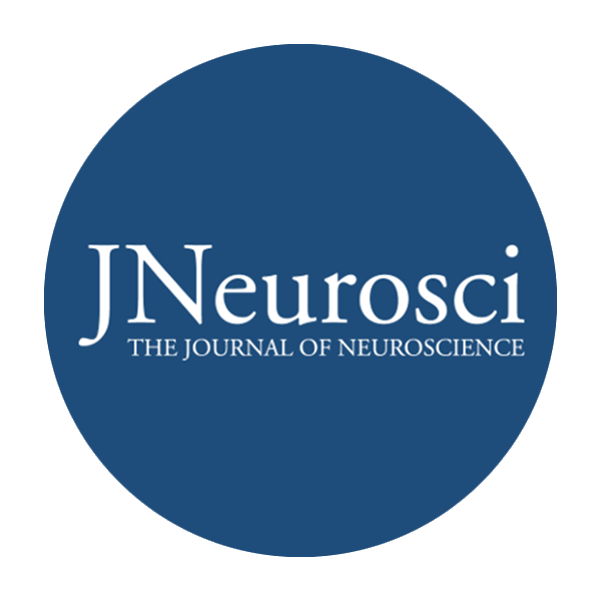
Sandra, U. O., U. G. Roman, et al.
Organization of Cortical and Thalamic Input to Inhibitory Neurons in Mouse Motor CortexView Publication

Otomo, K., J. Perkins, et al.
In vivo patch-clamp recordings reveal distinct subthreshold signatures and threshold dynamics of midbrain dopamine neurons." Nature Communications 11(1): 6286View Publication

Gergues, M. M., K. J. Han, et al.
Circuit and molecular architecture of a ventral hippocampal network." Nature Neuroscience 23(11): 1444-1452. https://doi.org/10.1038/s41593-020-0705-8View Publication

NeuroInfo will run on most PCs running Windows 10 or later and having at least 16GB of RAM and 4GB GPU RAM. NeuroInfo will take advantage of available computer resources, so larger data sets will benefit from having more cores and memory. We’d be happy to discuss your needs with you to ensure you have the optimal computer configuration.
Yes. NeuroInfo supports multiple software seats running under one license.
NeuroInfo can register mouse and rat sections cut in coronal, sagittal, or transverse orientations.
Yes! The innovative registration algorithms in NeuroInfo account for cut angles that deviate significantly from canonical orientations.
NeuroInfo can register sections from a variety of stains and imaging methods and cytoarchitectural indicators, and has been tested with fluorescence microscopy (NeuroTrace and DAPI), brightfield microscopy (multiple structural visualizing stains), and MRI.
NeuroInfo utilizes both linear and non-linear methods that can accommodate a damaged or warped sections while registering sections to an Atlas.
Currently, NeuroInfo supports the latest versions of the Allen Mouse Brain Atlas and the Waxholm Rat Atlas.
Yes. NeuroInfo was designed to support alternate atlases, including developmental and other strains and species. Here is a description of our open atlas format.
Please contact us for guidance on including your atlas for use in NeuroInfo.
"I rarely have encountered a company so committed to support and troubleshooting as MBF."

Andrew Hardaway, Ph.D. Vanderbuilt University
"The NeuroInfo software is so good. It compensates for students’ inexperience. They always lay down sections in the wrong order and have trouble recognizing the anatomy. This solves that problem."
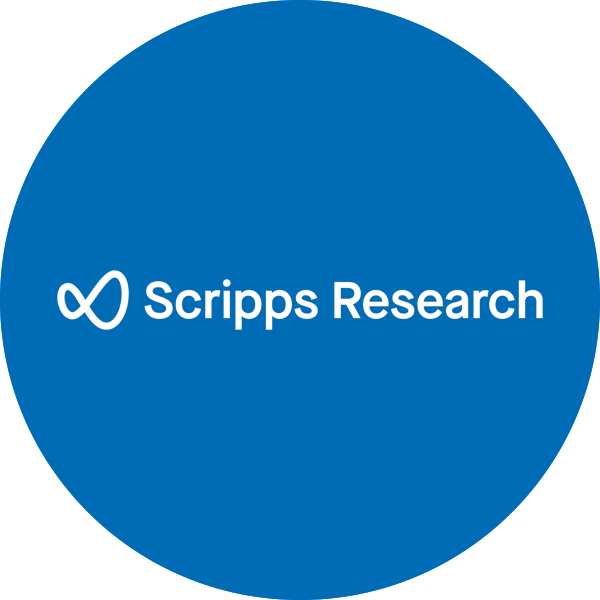
Hermina Nedelescu, Ph.D. Scripps Research
"MBF Bioscience is extremely responsive to the needs of scientists and is genuinely interested in helping all of us in science do the best job we can."

Sigrid C. Veasey, MD University of Pennsylvania
"I am so happy to be a customer of your company. I always get great help related with your product or not. With the experienced members, you are the best team I've ever met. All of your staff are very kind and helpful. Thank you for your great help and support all the time."
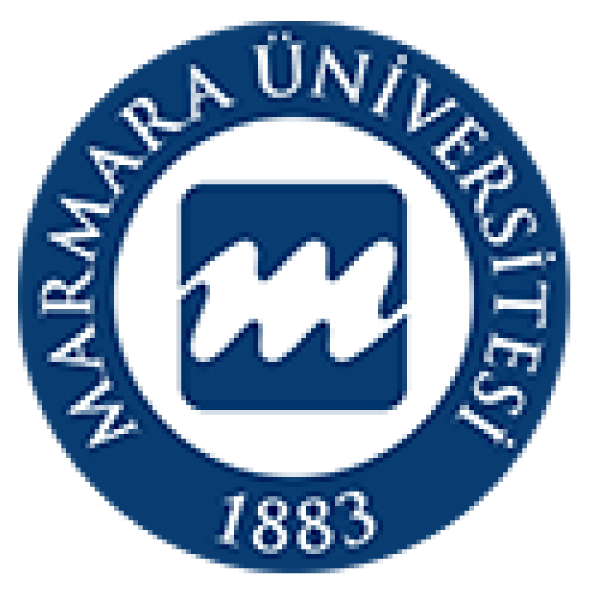
Mazhar Özkan Marmara Üniversitesi Tıp Fakültesi, Turkey
"We’ve been very happy for many years with MBF products and the course of upgrades and improvements. Your service department is outstanding. I have gotten great help from the staff with the software and hardware."
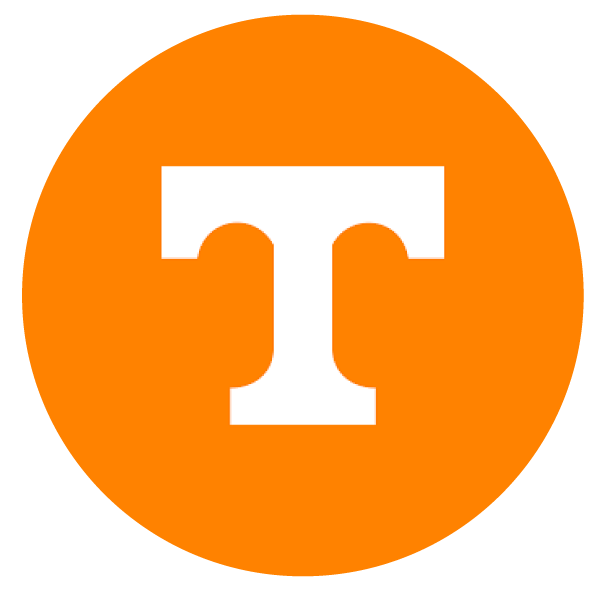
William E. Armstrong, Ph.D. University of Tennessee
"Our experience with the MBF equipment and especially the MBF people has been outstanding. I cannot speak any higher about their professionalism and attention for our needs."

Bogdan A. Stoica, MD University of Maryland
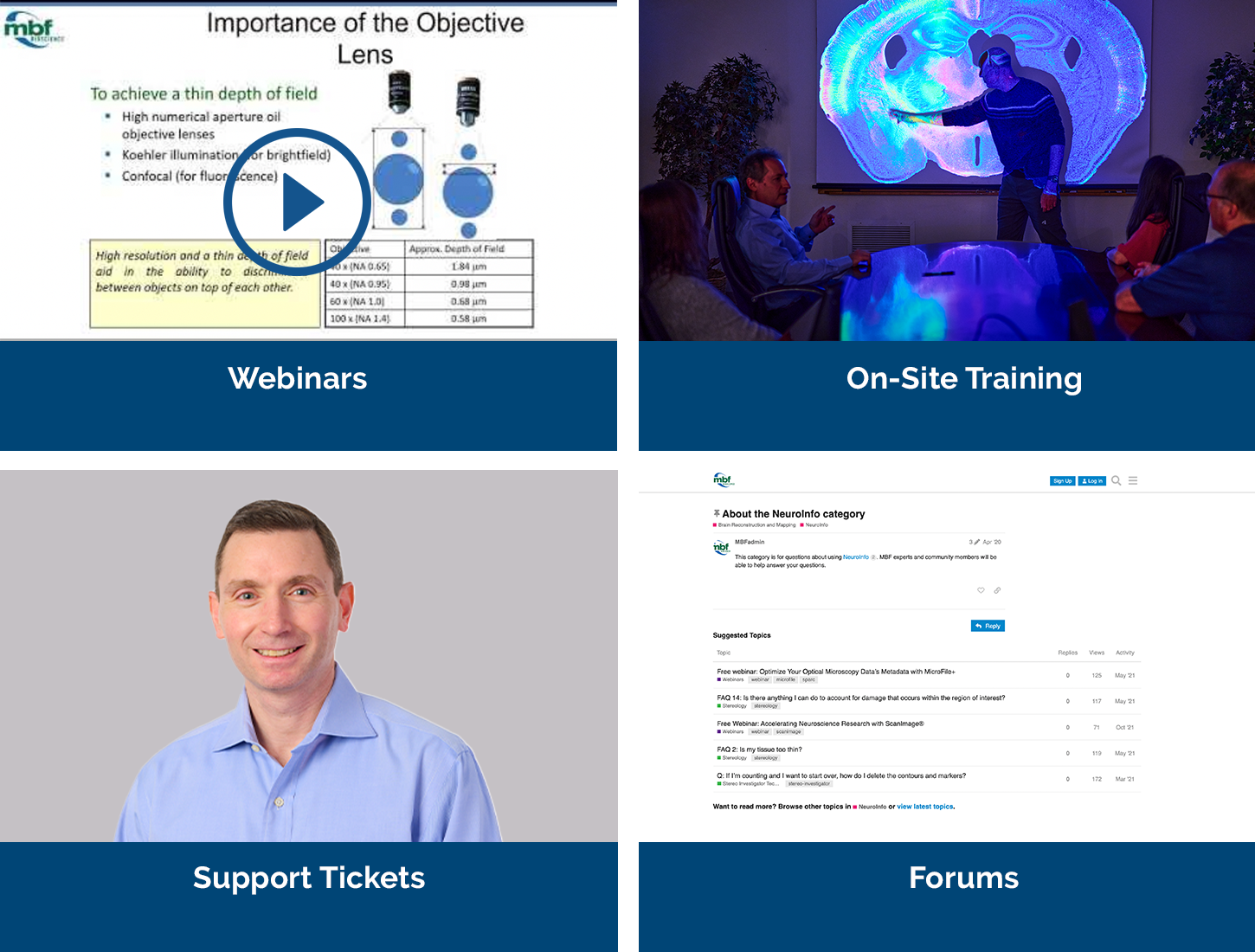
Our service sets us apart, with a team that includes Ph.D. neuroscientists, experts in microscopy, stereology, neuron reconstruction, and image processing. We’ve also developed a host of additional support services, including:
We offer both a free demonstration and a free trial copy of NeuroInfo. During your demonstration you’ll also have the opportunity to talk to us about your hardware, software, or experimental design questions with our team of Ph.D. neuroscientists and experts in microscopy, neuron tracing, and image processing.
Free 14-day trial copy: Download of a copy of NeuroInfo and use the tips and suggestions from the free evaluation to find out how easy it is to use and how quickly you can obtain useful data.


